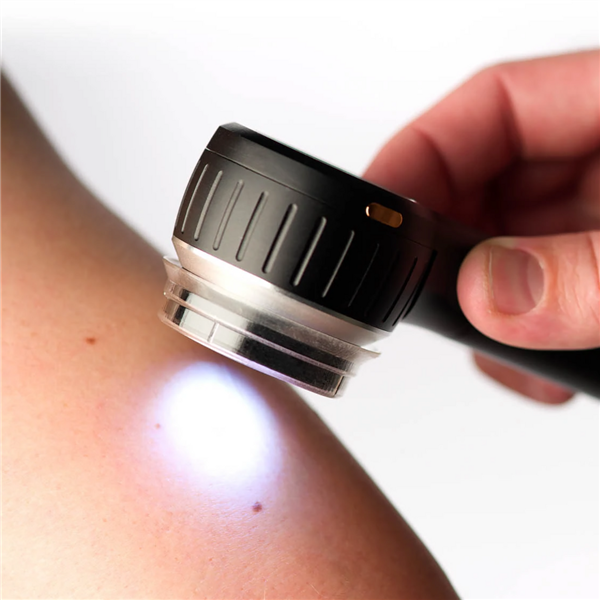Skin Checks
For a full skin check you will be asked to undress behind a curtain, leaving your underwear on. Potentially dangerous skin cancers can occur on parts of the body which are not regularly exposed to the sun. Genital areas are not generally examined unless you request that.
The lymph node regions in the neck, armpits and groin will be examined routinely. Please don’t apply make-up or lipstick because it makes interpretation of facial spots more difficult.
Your skin spots will be examined using a dermatoscope. This is a magnifier with a glass plate which is applied to the skin with a drop of hand sanitiser or alcohol wipe to allow the spot to be clearly seen.
Images are routinely taken of suspicious spots. By enlarging the image a more accurate diagnosis can be made. The images can also be vital for following up suspicious moles to assess for change over time. Typically that follow up interval will be four months. Also baseline images of various body regions may be taken to assist with identifying new spots in the future. We will ask for your consent to images being securely stored, and also ask your consent for teaching and research, in which case they can have identifying features blocked out.
If a suspicious spot is found, it may need to have a sample piece taken from it to determine what treatment it needs (punch or shave biopsy). If the suspicious spot is pigmented, it will generally need to be fully removed to achieve a diagnosis (excision biopsy). These biopsies are performed at the clinic using local anaesthetic. It may be necessary to arrange a separate procedure time for the biopsy.
Skin cancers needing surgical removal can be managed either at the clinic, or by referral to a specialist.
